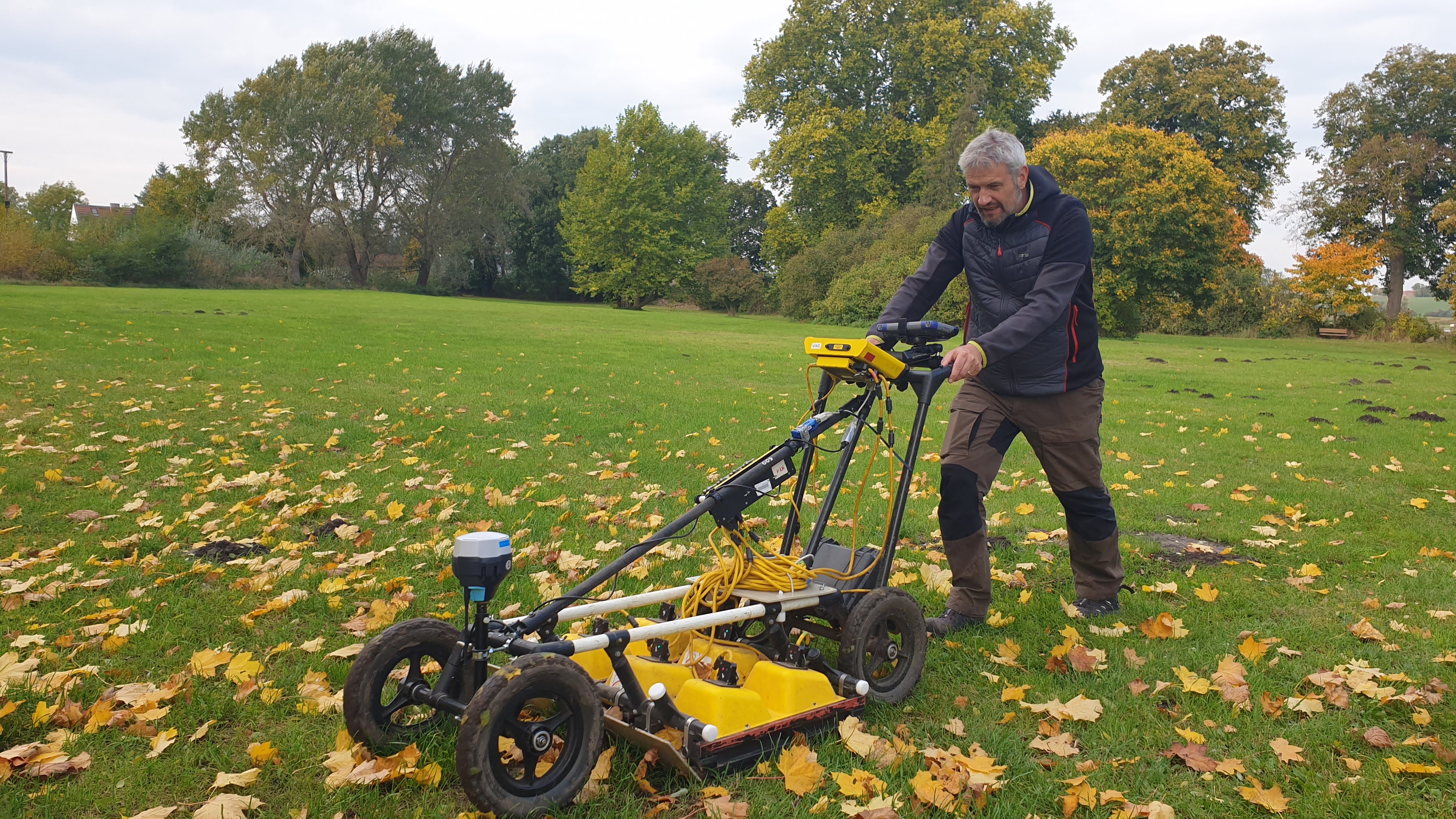The underground remains of a well were found in the garden of Broock Mansion, located in the Mecklenburg Lake District.A group of researchers examined remains of the foundations of a castle in Putbus, on the Island of Rügen, which was torn down in the 1960s. During this process, a lawn area of about 4500 square metres was measured with ground-penetrating radar (GPR). This allows the subsurface to be examined without destroying it. The GPR system sends electromagnetic signals into the ground which are reflected at the boundaries of layers such as archaeological structures. A receptor in the ground radar records the returned signals. ‘The art-historically relevant ground monuments are explored in a non-invasive way, and structures and objects that were thought to be lost can be uncovered and integrated into the research,’ reports Prof. Dr. Kilian Heck, head of the research project Manors of the Baltic Sea Region.
In order to obtain high-resolution images, parallel radar profiles were recorded only 25 centimetres apart and with a measuring point spacing of five centimetres in the direction of the profile. This creates a three-dimensional data set of the subsurface, which can be sliced into horizontal segments of depth. This creates data images that show archaeological and art-historical structures of interest in plan view. Wall foundations, cavities, pipes, backfilled pits and trenches in the subsurface can be visualised. In addition, the surfaces of the study areas were mapped in spatial detail using photographic documentation.
The first analysis of the data is promising. As a next step, the radar data will be processed, visualised and interpreted in Vienna using special software, before it is presented to the interested public and also published for the scientific community.
Non-destructive exploration of the subsurface is becoming increasingly important in archaeology. By using modern geophysical multi-channel sensor systems and precise positioning technology, large areas can be investigated using high resolution technology in a short period of time. In the past, the experts from Austria have contributed toward making prospection methods for investigating large areas much more efficient and, as a result, have made exciting archaeological discoveries. The aim of this international, interdisciplinary collaboration is to develop and apply efficient methods that enable the research and documentation of manor houses around the Baltic Sea.
Further Information
Prof. Dr. Kilian Heck, CDFI, University of Greifswald
Vienna Institute for Archaeological Science, University of Vienna
Vienna Central Institute for Meteorology and Geodynamics (ZAMG)
Geophysical methods in archaeology (examples)
- Measurements at Viking Age sites in Norway
- Mapping of the Roman town of Carnuntum near Vienna.
- Discoveries in the landscape around Stonehenge
Contact at the University of Greifswald
Prof. Dr. Kilian Heck
Caspar-David-Friedrich-Institute
Chair of Art History
Rubenowstraße 2 B, 17489 Greifswald
kilian.heckuni-greifswaldde
Torsten Veit
Caspar-David-Friedrich-Institute
Rubenowstraße 2 B, 17489 Greifswald
Tel.: 03834 420 3256
torsten.veituni-greifswaldde

